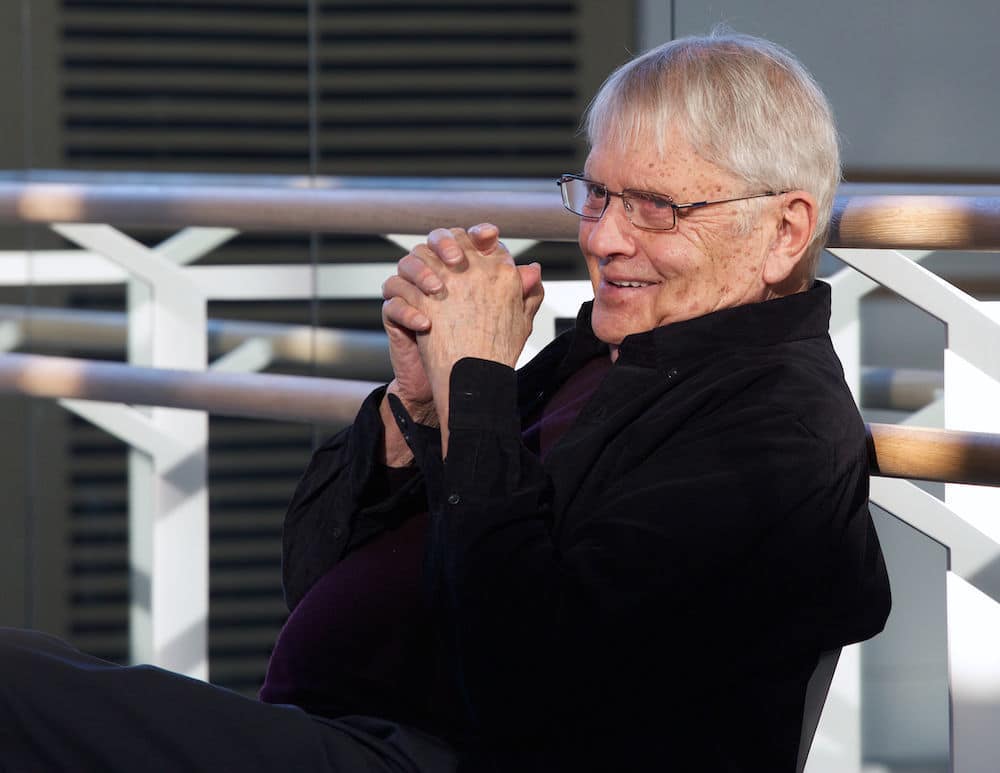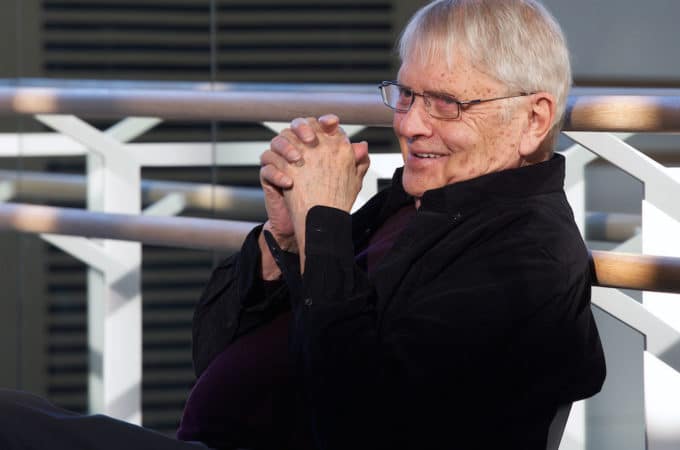
Paul R. W. Jackson: The Last Guru: Robert Cohan’s life in dance, from Martha Graham to London contemporary dance theatre With commentary by Robert Cohan 380pp. Dance Books. £20 (US $33.95).
The dance world’s reach has always been tiny. Robert Cohan, the driving force in the understanding of contemporary dance in Britain in the twentieth century, grew up, like most people, in blissful ignorance of either classical dance or the burgeoning contemporary schools. Cohan was born in 1925 and raised in Brooklyn. His dance-life was, surprisingly, entirely a product of the US army.
He went to his first dance performance at the suggestion of army friends; he was wounded in Europe, and his months in hospital enabled an education through a well-stocked library. The girlfriend of an army buddy led him to Martha Graham’s classes; and his tiny war pension enabled him to give up a well-paid Job to attend fulltime. No General Patton, no London Contemporary Dance Theatre.
Cohan – a lover of the mystical – would have said he was destined. And in many ways it was an astonishing ascent. Within a year of his first class, he was dancing with Graham’s company; four months later, he was teaching her technique to others and studying choreography with Louis Horst, Graham’s companion and musical director. This three-stranded enterprise – teaching, choreographing and performing – was to be his raison d’être.
Cohan’s charm and leadership, now legendary in the dance world, must have been present from the beginning, as he survived two decades in the orbit of Graham, a notoriously difficult character. A break of five years, in which he cemented his teaching reputation, choreographed and ran his own small dance company intervened, before he returned once more to the fold, in time for a tour to the UK, and a meeting with Robin Howard. Howard was a Graham fanatic, and was determined to bring contemporary dance teaching and performing to the UK. The man suggested by Graham was Cohan.
Difficult and by now alcoholic though Graham might have been, she was also right. The first performance by Cohan’s London Contemporary Dance Theatre (LCDT) took place less than a year after his arrival, and the important British dancers and choreographers – including Siobhan Davies and Richard Alston – who studied with him are legion.
Despite this astonishing success, however, much of his life was a tangle of wrangles with the Arts Council, which acted as censorious paymaster, unable ever quite to decide what it wanted. First, it wanted a company that produced artistically challenging works; then it quavered that the work was too “difficult” for “the provinces”, and what it really wanted was bigger audiences; then it withdrew support from those who produced the unchallenging work that drew in these audiences. It makes for dispiriting reading, as does the backstory of Robin Howard, who cheerfully pauperized himself to make up for the government’s lack of support, before being ousted in a boardroom coup encouraged and admired by the Council. Cohan’s later years, therefore, were spent only partly in Britain; he also worked as artistic adviser to the Batsheva Dance Company in Tel Aviv (founded by one of Graham’s very earliest supporters), and in teaching and choreographic endeavours.
Paul R. W. Jackson’s decision to tell Cohan’s story entirely chronologically provides a number of challenges. Cohan’s choreographic output was large – nearly seventy works – and at times the chapters have an “and then … and then” feel to them. A thematic approach would have allowed the author to show the development of the choreographer, from his more formal, austere earlier pieces, to his later, more lyrical period. There would also, crucially, have been space to discuss Cohan’s ideas. We are told he was attracted to the mystical, and was a reader of George Gurdjieff and Jiddu Krishnamurti among others, but we gain little understanding of how that reading translated into his work.
In fact, there is almost no attempt to get inside Cohan’s head and discover what he was thinking. His decision to work in Apartheid era South Africa, despite the cultural boycott of the country, is given exactly the same amount of space – two lines – as his “truly extraordinary” experience on a wildlife safari on his way home. His private life, too, barely rates a mention – we gather that he had a penchant for troubled, addicted men, but there is no attempt to look at what that might mean. Each chapter ends with a page or so of comment from Cohan, who read the manuscript after it was finished. At one point he says, “those ten years [with Graham] … were the happiest and most fulfilling of my life”, which comes as a surprise after Jackson’s chapter of trauma, slog and poor working conditions. But there is no way, in the structure Jackson has chosen, to address these competing stories.
Jackson’s belief in Cohan’s achievement is admirable, and, for those who have seen his work, entirely Justified. To name but a few examples: Eclipse is an extraordinary theatrical, dramatic piece that turns white-hot emotion into pure icy geometry; Cell’s universality, its theme being the mind imprisoned by the man, has been demonstrated over its nearly half-century of life; and in Class, Cohan did for contemporary dance what the défilés of the Paris Opéra do for ballet, laying bare the spatial arrangements, musical organization and formal composition that underlie Graham’s work.
It is dispiriting, therefore, that Jackson constantly reduces this genuine admiration to an aggrieved arguing back at critics long gone. Yes, it’s a shame that John Percival of The Times did not find Cohan to his taste. No, we do not need a quarter-century-old derogatory review from the Kilburn Times resuscitated so that we can be told why it is wrong. Cohan’s achievement was to enable an entire art form to flourish. That will survive. His best works will survive. That is what art is, in the end – what survives. The rest is howling into the wind.
Reviewed in the TLS, 10 January 2014
